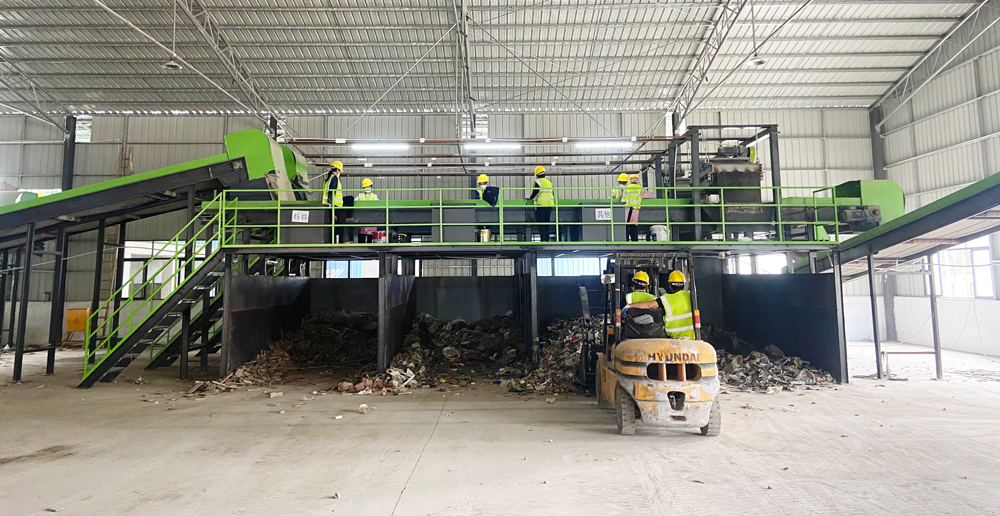 Time:2025-04-09
Time:2025-04-09
 Source:青绿环境
Source:青绿环境
Construction Waste Processing Plants Typically Equip a Range of Sorting Devices to Effectively Classify, Recycle, and Reuse Construction Waste. Below Are Some Common Devices and Their Functions:

1. Primary Crusher
Used to break down large - sized construction waste into smaller particles for subsequent sorting and processing.
2. Magnetic Separator
Separates metal fragments, such as rebar and nails, based on magnetic principles. These metals can be recycled and reused.
3. Air Separator
Separates lightweight materials (such as plastic films and paper) from heavy materials (such as stones and concrete blocks) based on density differences through the action of air.
4. Vibrating Screen
Screens materials by size to further refine the sorting effect. Vibrating screens can effectively remove fine impurities and classify materials according to particle size.
5. Manual Sorting Station
Used as a supplementary method for manually sorting materials that machines cannot easily identify or separate, ensuring sorting accuracy.
6. Optical Sorter
Uses image - recognition technology to distinguish objects of different colors or materials. It is suitable for fine - sorting needs and improves sorting efficiency and accuracy.
7. Drum Screen
Classifies materials by size through the rolling and falling action of a rotating drum. It is suitable for processing a variety of material types.
8. Integrated Sorting System
A composite device that combines the above - mentioned technologies to provide a more comprehensive sorting solution. It has a high degree of integration and strong processing capabilities.
9. Dust - Removal Equipment
Used to treat dust and exhaust gases generated during the processing of construction waste, ensuring environmental hygiene and reducing secondary pollution.
10. Regenerated Aggregate Production Line
Includes sand - washing machines, drying equipment, etc., to convert preliminarily processed construction waste into recycled aggregates for use in the production of new building materials.
When selecting specific equipment, factors such as the specific composition of construction waste, site conditions, processing capacity, and budget should be considered to determine the most suitable configuration. Additionally, with the development of technology, advanced automated and intelligent devices are gradually being applied in the field of construction waste processing to improve work efficiency and resource recycling rates.













 Prev
Prev











